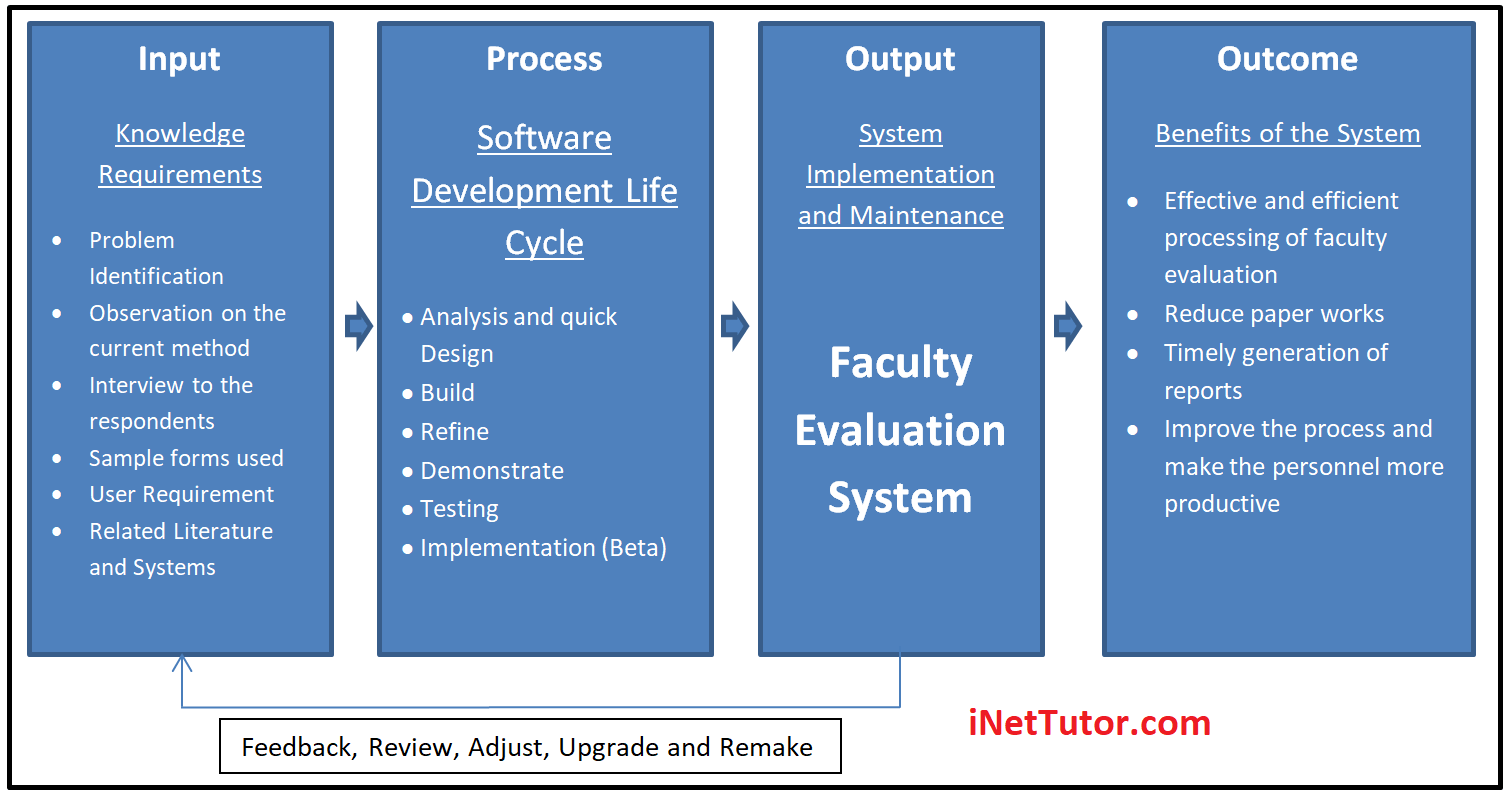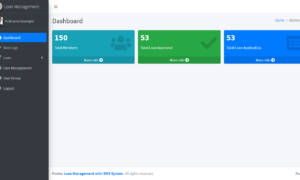IPO Model Conceptual Framework of Faculty Evaluation System
The capstone project entitled “Faculty Evaluation System” is a web and mobile based platform that allows the students to evaluate, give ratings and comments to their instructors. The students can use their computers and mobile devices to evaluate their teachers. This tool provides convenience not only to the students but to the management especially to the team who conduct and processed the results.
This article will give you an example on how to prepare a conceptual framework on the capstone project entitled Faculty Evaluation System. The model used for the conceptual framework of this study is the input, process, output model or IPO model.
Objective of the Study
- The study aims to design, develop and implement a system that manages the processes of Faculty Evaluation System.
- The said study aims to improve and upgrade the current process of Faculty Evaluation System.
- To implement and utilize a centralize database system that manages the records and reports related to faculty evaluation.

The image above is the conceptual framework of the project entitled Faculty Evaluation System. It is based on IPO model or also known as the input, process and output model.
Input
The input phase or the knowledge requirement stage consists of the following:
- Problem Identification – as part of our requirements in the capstone project, our team have decided to conduct a study on faculty evaluation and identify the problems encountered in the said operation.
- Observation – to understand further the processes involved in the faculty evaluation, we have observed how the evaluation has been done and what the expected outputs are.
- Interview – the researchers also conducted an interview to the persons involved in the processing of the faculty evaluation system.
- Sample forms used – the researchers also asked for the forms used and sample of reports produced in the processing of the faculty evaluation, it will serve as the basis in the development of the system.
- User Requirement – the researchers identified the features of the system based on the needs of the users.
- Review of Related Literature – the researchers conducted a research on the different literatures and related systems to serve as a guide in the development of the faculty evaluation system.
Process
Software Development Model to use
This section presents the system design and methodology which includes the requirements, analysis, and documentation on the different stages such as data analysis and quick design, system design, prototype cycle, testing, and implementation. Rapid Application Development (RAD) was selected for the development of the system. It shows the different processes that the researchers need to follow to have a better outcome for the developing system.
Analysis and quick Design
This phase of the development life cycle is the analysis stage where the problems were analysed and given initial solution, information gathered through interviews and observation were also discussed and will be integrated in the initial design. Forms used by the current flow and as well as the related studies and systems will also be a part of the initial design plan. Researchers decided to come up on creating a system that will give them a secured and better way on manipulating records. This will give them with a paperless transactions and keeping the records of faculty evaluation. In this phase also we plan on what to design for our system, or designing the system.
Build
After creating the design, in this process we will build the system based on the design we have made in the first phase. This is also where the coding phase will occur in order for the user to create the interface and integrate it to the backend database.
Refine
After building and demonstrating the system, we have polished the system to see if it has some bugs and redundancy, if it does we could just go back to the building phase and rebuild it again and it will repeat until it is fully polished.
Demonstrate
In this phase the system that is already built will be demonstrated, to see if the result meets the desired outcome that the researcher is building for.
Testing
Before implementing the system, we conducted a test to the system to know if there is still a need to be revised, if there are errors or bugs in the coding, if the user interface is appropriate and is user-friendly, and to know if it holds the functionality well, by letting the client use it.
Implementation
After the testing phase, if there are no other issues that need to be changed, then the system will be implemented to the client for them to use it. We will also maintain the good functionality of the system and update from time to time.
Output
The final product of the study is a database driven information system that will replace or aid the respondents in conducting the faculty evaluation system. Implementation of the system is highly encouraged.
After the evaluation and gathering of data, the capstone project entitled “Faculty Evaluation System” was evaluated by IT experts and tested by the end-users. The Grand Mean of system based on McCall’s software quality model is 4.12 which is interpreted as Good, the level of the system acceptability based on User Acceptance testing on the required application functionality was rated Good with a rating of 4.43. This led the researchers into conclusion that the objectives of this study had satisfied the end-users and therefore recommends the implementation of the project.
Outcome
Benefits of the System:
- Effective and efficient processing of faculty evaluation
- Reduce paper works
- Timely generation of reports
- Improve the process and make the personnel more productive
Message us on our facebook page for the complete documentation of the project.
You may visit our facebook page for more information, inquiries and comments.
Hire our team to do the project.


